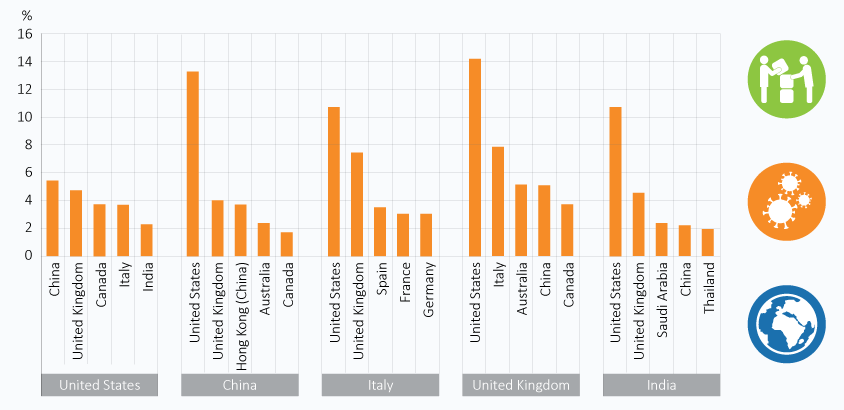Times of crisis and opportunity
Global challenges require global solutions
As the pandemic is a global problem, it requires global solutions involving international co-operation and collaboration. No single country can beat COVID-19 on its own. The speed with which research groups and biopharmaceutical firms are developing COVID-19 vaccines builds on years of basic research investment, as well as the recent institutionalisation of international co-ordination efforts to develop agile technology platforms that can be activated as new pathogens emerge. These relatively new arrangements are performing well, but remain underfunded and dependent on a handful of countries and philanthropic institutions for financing.
Governments should consider scaling them up and extending them to other global challenges where R&D preparedness is important, capitalising on the momentum from the response to COVID-19. R&D preparedness measures include technology platforms, infrastructures and collaborative networks that will improve countries’ abilities to respond effectively to a diverse range of risks. Governments also need to work together on new financing and governance mechanisms, wherein business and private-finance actors work with multilateral and national development banks to co-finance STI solutions for global challenges. The rapid and unprecedented mobilisation of public and private R&D funding for COVID-19 vaccines and their global distribution demonstrates that new innovative funding models can be deployed to address global challenges through international STI co-operation.
A lot of international scientific co-operation on COVID-19 has been initiated by researchers themselves, and has built on existing ties. For example, research links between China and OECD countries have grown strongly in recent years, and this is reflected in patterns of COVID-19 co-publication (see figure).
Share of international scientific collaboration on COVID-19 medical research by partner economy
Top 5 countries and their top 5 partner countries, total number of documents (fractional counts), January-November 2020

Source: OECD and OCTS-OEI calculations, based on US National Institutes of Health (NIH) PubMed data, https://pubmed.ncbi.nlm.nih.gov (accessed 30 November 2020). StatLink https://doi.org/10.1787/888934223479
China has become the world’s second-largest R&D performer, having 80% of the GERD of the United States in 2018 (see figure). But there are concerns that a lack of openness and reciprocity in some of these collaborative relationships may threaten their future. Governments need to build trust and define common values to ensure a level playing field for scientific co-operation and an equitable distribution of benefits.
Gross Domestic Expenditure on R&D, 2000-18
Million USD PPP constant prices

Source: OECD MSTI 2020/1 (August update), http://www.oecd.org/sti/msti.htm.
- The STI policy mix needs to be more targeted
- Government R&D expenditures may need to shift to reflect new priorities
- Growing government debt could lead to austerity, and some hard choices for research and innovation policy
- Postgraduate training regimes need reforming to support a diversity of career paths
- Global challenges require global solutions
- Building government capabilities to meet future challenges will be a major challenge in itself
‹ Homepage
Related Documents
- Postgraduate training regimes need reforming to support a diversity of career paths
- Responses to the crisis have drawn upon the innovative potential of businesses
- The pandemic has triggered an unprecedented mobilisation of the scientific community
- Growing government debt could lead to austerity, and some hard choices for research and innovation policy
- Government R&D expenditures may need to shift to reflect new priorities
- Much of the research and innovation response to COVID-19 has been international
- Business research and innovation have been affected unevenly by the crisis
- Building government capabilities to meet future challenges will be a major challenge in itself
- Despite the disruption, scientists have continued their work during the crisis
- The STI policy mix needs to be more targeted
- Governments acted quickly to fund COVID-19-related research and innovation at scale